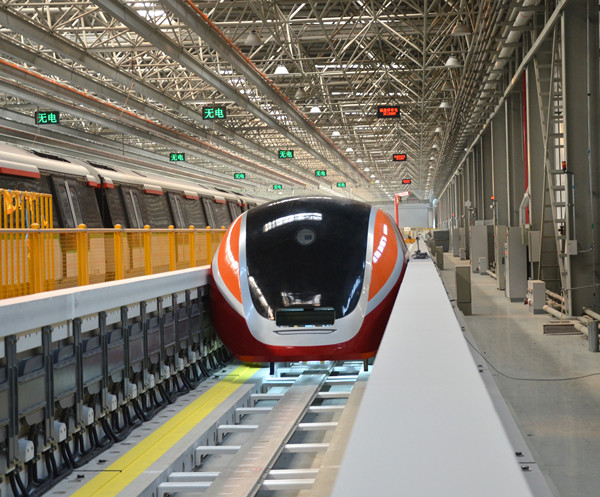
The HTS electric suspension full-element test system undergoes its first suspension operation, March 31. [Photo provided to gojilin.gov.cn]
The first domestic high-temperature superconducting, or HTS levitating electric train test system, independently developed by CRRC Changchun Railway Vehicles Co, completed its first operations on March 31.
Based in Changchun, capital city of Northeast China's Jilin province, the manufacturer has been committed to the R&D and manufacturing of maglev trains since the early 1990s.
The new levitation operation is understood to have fully verified the key core technologies for the superconducting electric maglev transportation system - such as superconducting magnets, linear synchronous traction, an induction power supply and low-temperature refrigeration.
This is said to have laid a solid foundation for promoting the engineering application of superconducting electric maglev transportation systems.
According to Yu Qingsong, deputy chief engineer at CRRC Changchun Railway Vehicles Co, the superconducting electric maglev transportation system consists of vehicles, rails, traction power supply, operations communications and other systems.
Yu said it was suitable for applications such as high-speed, ultra-high-speed and low-vacuum pipelines.
The operating speed can reach 600 kilometers per hour and above and it has the advantages of high speeds, safety, intelligence, comfort and a strong environmental adaptability.
The superconducting electric maglev transportation system is understood to be an important choice for China to build fast transportation channels between megacities and developed economic circles in the future.
It is also expected to help provide important support for optimizing the spatial layout of the country, promote its coordinated regional development and help build a comprehensive three-dimensional transport network.
At present, the manufacturer says it has mastered the system integration technology of maglev trains with different speed grades and different application scenarios – such as medium and low speed, normal high speed and superconducting high speed. It says it has built an R&D and manufacturing platform for serialized maglev products.







